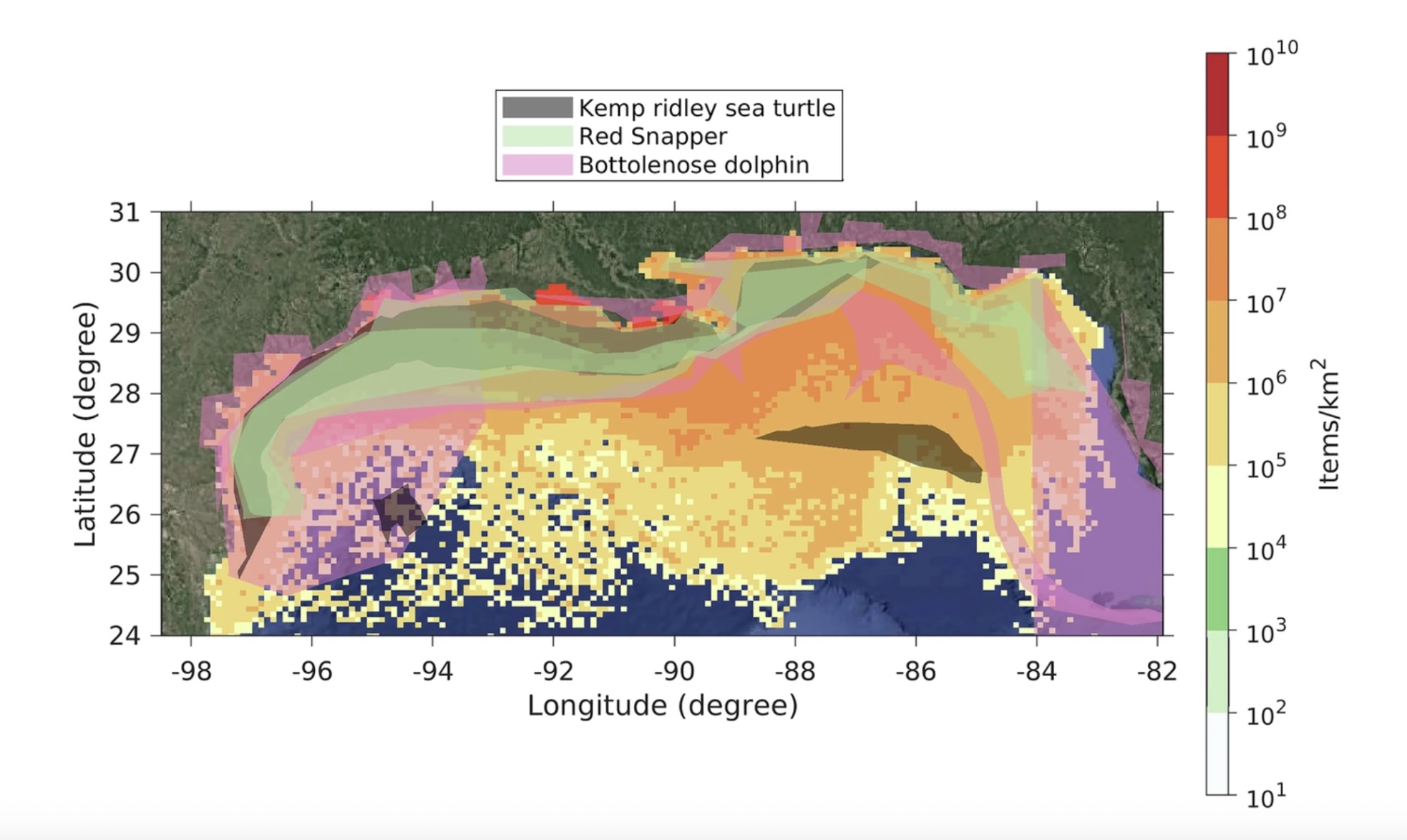
Critical wildlife habitats are exposed to pollution risk in the seas off the southern United States, with implications for human health and food security. “Most of the pollution comes from rivers and not from wastewater treatment plants,” says CMCC scientist Annalisa Bracco, co-author of the study that used advanced computer models to track tiny plastic particles across three years.
The Gulf of Mexico is facing a growing threat from microplastic pollution, with new research revealing how tiny plastic particles are accumulating in areas crucial to marine life including sea turtles, red snapper, and dolphins. A comprehensive study published in the journal npj Ocean Sustainability demonstrates how computer modeling can map the movement and impact of these pollutants with unprecedented precision.
The research, co-authored by CMCC scientist Annalisa Bracco, used advanced numerical models to track different sizes and types of microplastics over short periods across three years in the northern Gulf of Mexico. The findings paint a concerning picture of pollution patterns that directly threaten both marine ecosystems and the seafood that reaches consumers across the globe.
“The Gulf of Mexico, especially its northern part near the southern U.S., is increasingly polluted by tiny plastic particles called microplastics,” explains Bracco. “We used computer models to study how these plastics move over short periods (about a month) across three years. We looked at different sizes and types of plastics and found that most pollution comes from rivers and not from wastewater treatment plants.”
Rivers drive the pollution crisis
The study’s most significant finding challenges common assumptions about microplastic sources. While wastewater treatment plants have often been considered major contributors to ocean plastic pollution, the research demonstrates that rivers are the primary pathway for microplastics entering the Gulf of Mexico.
The modeling revealed distinct behaviors among different types of plastic particles. Heavier plastics tend to settle at the bottom of the ocean, while floating particles show surprising resilience to wave motions. A major buildup of microplastics was identified just west of the Mississippi River Delta, creating a pollution hotspot in waters that serve as critical habitat for numerous marine species.
Not just marine life at risk
The study’s innovative approach combines plastic pollution mapping with detailed analysis of marine species distributions, creating an unprecedented view of where these threats overlap. This concurrent mapping represents what Bracco identifies as “the most important outcome” of the research.

Image showing the distribution of non-settled microplastics simulated from riverine sources. Overlap is analyzed for three species: Kemp’s ridley sea turtle, red snapper, and bottlenose dolphin. “The concurrent mapping of plastic pollution and marine life is the most important outcome,” says Bracco in reference to this image. Source: Zhou et al., 2025.
The implications extend directly to human health and food security. “The fact that plastic impacts regions of intense fishery (which means we’re ingesting some) is often the best way to activate a policy response or gain public interest,” notes Bracco.
The research team, which included an undergraduate student from Georgia Tech who collected species distribution data, exemplifies how young researchers can contribute meaningfully to addressing pressing environmental challenges.
The study’s framework also offers more than just documentation of the ongoing problem in the region – it provides a roadmap for action. By identifying specific point sources of plastic pollution, the research enables targeted mitigation activities that could significantly reduce environmental impact.
“It is important to show how state-of-the-art modeling tools can be used to address coastal problems that interest the general public,” says Bracco. “It is somewhat easier to raise awareness of the risks associated with plastic pollution (just one of the many anthropogenic threats) when linking it to fish, turtles, and dolphins instead of simply delivering the likely plastic distribution maps.”
Expanding the research framework
The methodology developed for this Gulf of Mexico study establishes a framework that could be applied to other coastal regions worldwide. CMCC’s Global Coastal Ocean (GOCO) division is well-positioned to expand this type of research to additional areas facing similar challenges.
“This project is setting a framework for, hopefully, more similar efforts to come,” says Bracco, highlighting the potential for broader application of these modeling techniques.
The research demonstrates the critical importance of making climate and environmental science relevant to everyday concerns. “In other words, it is important to look for ways to make our research relevant to everyday life (in this case the fish we consume) to help put in motion the change that is needed,” says Bracco.
This comprehensive approach to understanding microplastic pollution represents a significant advancement in coastal environmental research, providing both the scientific foundation and practical framework needed to protect marine ecosystems and the communities that depend on them.
For more information:
Zhou, X., Xiao, S., Ramirez, M. et al. Modeling river and urban related microplastic pollution off the southern United States. npj Emerg. Contam. 1, 9 (2025). https://doi.org/10.1038/s44454-025-00011-3


